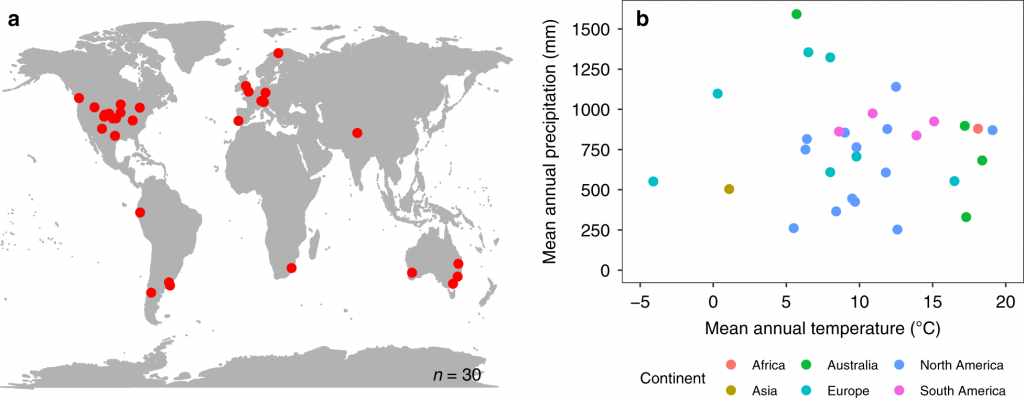A UF/IFAS Soil and Water Sciences Department researcher was one of more than 40 researchers examining how nitrogen changes in grassland soils. The process, known as mineralization – organic nitrogen’s conversion into inorganic nitrogen – occurs naturally. The team studied 30 grasslands worldwide in the global effort.
Dr. Maria Silveira, professor of soil fertility and water quality, said the study focused on the balance between mineralization and immobilization, which is referred to as net nitrogen mineralization. Immobilization is the opposite of mineralization, in that soil organisms use the nitrogen before plant systems can take up the nutrient. Until now, most global-scale assessments of net nitrogen mineralization have been lab-based.
“With these 30 field sites around the world, we are examining the net nitrogen mineralization in real-world conditions,” Silveira explained. “This will give us a better understanding of how this process takes place in soils. It also helps us understand what conditions aid or hinder the process.”
Findings
Specifically, the team found that the temperature of the wettest quarter, microbial biomass, clay content, and bulk density largely explained realized (in the field) nitrogen mineralization. Potential (in the lab) nitrogen mineralization only weakly correlates with realized nitrogen mineralization. However, when combined with soil and climatic variables, potential contributes to explain realized net nitrogen mineralization.
“With this global study, we were able to learn what happens in the lab is not always an accurate indicator of what happens in the field,” Silveira said. “But when paired with a specific climate and soil property data, potential data can give a good estimation of realized soil net nitrogen mineralization.”
The team’s findings appear in the journal Nature Communications. You can see the full article here: https://www.nature.com/articles/s41467-019-12948-2

 0
0
